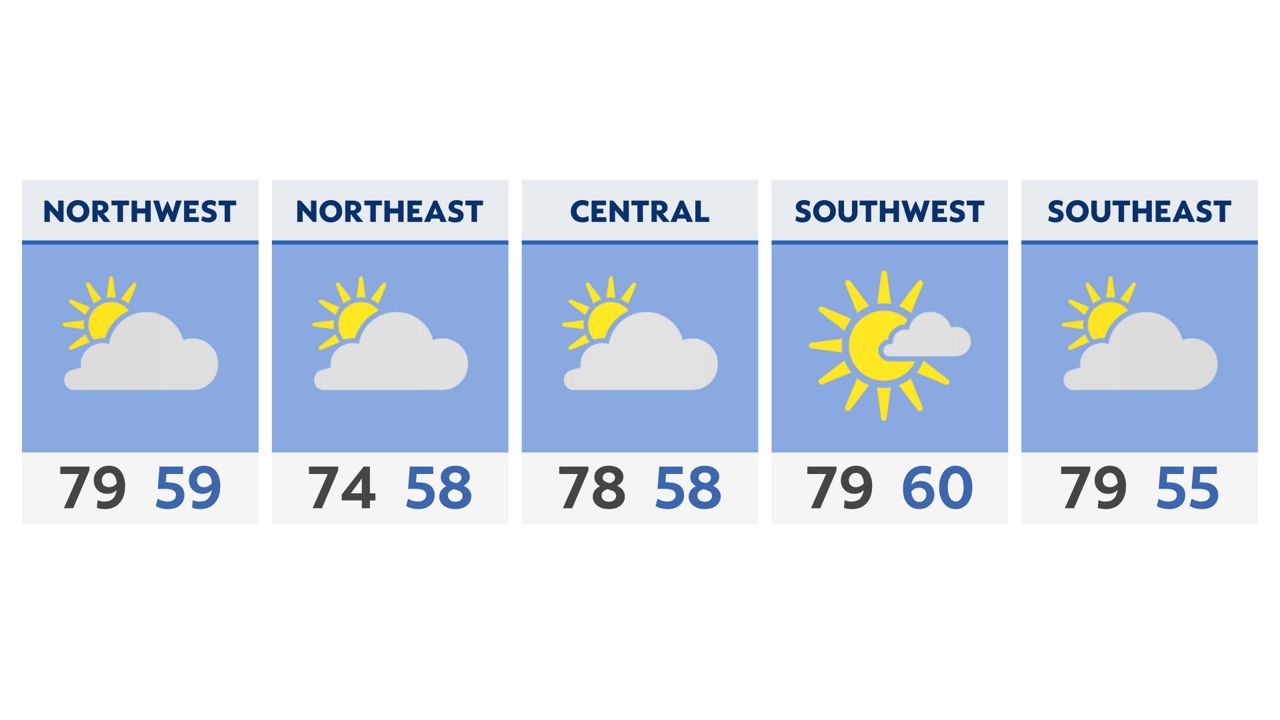The remnants of Hurricane Ida barreled into the northeastern U.S. with historic and unanticipated fury, killing at least 40 people, according to an Associated Press tally.
The storm killed at least 45 people from Maryland to Connecticut on Wednesday night and Thursday morning. At least 23 were in New Jersey alone, according to the state’s governor.
“I am saddened to report that, as of right now, at least 23 New Jerseyans have lost their life to this storm,” New Jersey Gov. Phil Murphy wrote on Twitter. “The majority of these deaths were individuals who got caught in their vehicles by flooding and were overtaken by the water. Our prayers are with their family members.”
The storm caused low-lying apartments to suddenly fill with water, caused record flooding along rivers and turned roadways into car-swallowing canals.
At least 12 people died in New York City, officials said, after initially reporting nine deaths earlier Thursday. Three died in suburban Westchester County.
Officials later Thursday with the New York City Fire Department said that three people were found dead in a flooded basement in Queens Thursday afternoon, bringing the death toll in the city to 12.
According to the FDNY, the victims were found just before noon on Thursday.
Eight of the nine initial deaths reported occurred in Queens and in residential home basements, Police Commissioner Dermot Shea said Thursday morning at a briefing with Gov. Kathy Hochul, NYC Mayor Bill de Blasio and other elected officials.
The ninth victim was discovered earlier in the morning in the backseat of a vehicle on the Grand Central Parkway, Shea said.
Hochul and de Blasio said the storm’s strength took them by surprise: “We did not know that between 8:50 and 9:50 p.m. last night, that the heavens would literally open up and bring Niagara Falls level of water to the streets of New York.”
“It’s hard to imagine that people simply in their cars, in their homes, in their basements succumb to the ravages of a brutal storm and their families must just be in such pain this morning,” Gov. Hochul said.
De Blasio said he’d gotten a forecast Wednesday of 3 to 6 inches of rain over the course of the day. Central Park ended up getting 3.15 inches just in one hour of the deluge, surpassing the previous recorded high of 1.94 inches in one hour during Tropical Storm Henri on Aug. 21.
Water cascaded into subway tunnels, trapping at least 17 trains and forcing the cancelation of service throughout the night and early morning. Videos online showed riders standing on seats in cars filled with water. All riders were evacuated safely, officials said.
“It’s going to take until later in the day to have truly operational subway service,” Janno Lieber, acting chair and CEO of the MTA, told Spectrum News Thursday morning.
The FDR Drive in Manhattan and the Bronx River Parkway were under water during the storm. Garbage bobbed in the water rushing down streets. Some subway and rail service had resumed Thursday morning.
Among the other deaths reported in New York City, a 48-year-old woman and a 66-year-old man died after being found at separate residences, and a 43-year-old woman and a 22-year-old man both died after being found inside a home. Causes of death and identifications were pending.
Hochul spoke with President Joe Biden before the press conference where she said the president offered “any assistance that the state of New York needs.”
Hochul and Senate Majority Leader Chuck Schumer, D-N.Y., called for an emergency declaration from the federal government in order to ensure funds and resources are swiftly deployed.
“We will fight and make New York declared a disaster area,” Schumer said. “That will mean money — money for homeowners and individuals, money for small businesses that may have been lost and money to our city, state and other local governments for the amount of money that they’ve had to lay out to deal with this crisis.”
Officials also laid out plans for infrastructure improvements to deal with extreme weather fueled by climate change.
“Since [Hurricane] Sandy, we built that resiliency,” said Gov. Hochul. “Our coastal shorelines are in much better shape than they had been, but where we have a vulnerability is in our streets with the higher elevations now with the flash floods that were unknown before.”
The state has redirected its resources to embed with local agencies throughout New York City and surrounding areas, including Long Island and Rockland County, for on-the-ground assessments for a full accounting of losses.
Subway service is still getting back to normal as pumping systems work to remove the water from stations, Hochul said.
Majority Leader Schumer pledged earlier Wednesday that “we will do everything we can to get all of the federal aid that’s needed,” noting that he has spoken to FEMA administrator Deanne Criswell about the storm.
“She knows New York well,” the New York Democrat said of Criswell, who previously served as the commissioner of NYC Emergency Management.
“Global warming is upon us and its going to get worse and worse and worse unless we do something about it,” Schumer said. “That’s why its so imperative to pass the two bills: the infrastructure bill and the reconciliation bill.”
“This is not unusual anymore,” Gov. Hochul said of severe weather events caused by climate change. “Anyone that says it’s once in a century, once in 500 years — I’m not buying it.”
At least five died in Pennsylvania. In Connecticut, a state trooper died after his cruiser was swept away. Another death was reported in Maryland.
The ferocious storm also spawned tornadoes, including one that ripped apart homes and toppled silos in Mullica Hill, New Jersey, south of Philadelphia.
Gov. Phil Murphy declared a state of emergency in all of New Jersey’s 21 counties, urging people to stay off the flooded roads. Meteorologists warned that rivers likely won’t crest for a few more days, raising the possibility of more widespread flooding.
“There’s a lot of hurt right now in New Jersey,” Murphy told ABC’s “Good Morning America” Thursday. “We’re gonna be there for folks. It’s gonna be a long road to recovery but we’re gonna be there with them.”
“This is just yet another reminder: These things are coming more frequently, they’re more intense, sadly more deadly and we’ve got to update our playbook,” Murphy added, saying that the Garden State is “probably the most exposed state in the country to climate change.”
Record flooding along the Schuylkill River in Pennsylvania inundated homes and commercial buildings, swamped highways, submerged cars and disrupted rail service in the Philadelphia area. In a tweet, city officials predicted “historic flooding” on Thursday as river levels continue to rise. The riverside community of Manayunk remained largely under water.
“Philadelphia is experiencing historic flooding levels,” the city’s mayor Jim Kenney wrote on Twitter Thursday. “Please be safe, and if you must travel this morning, use extra caution. Never drive, bike, or walk through flooded roadways.”
Heavy winds and drenching rains punched a hole in the roof of a U.S. Postal Service building in New Jersey. Rain rushed through a terminal at Newark International Airport Wednesday and threatened to overrun a dam in Pennsylvania. Meteorologists warned that rivers likely won’t crest for a few more days, raising the possibility of more widespread flooding.
Rescues took place all over New York City as its 8.8 million people saw much worse flooding than from Henri, which was followed by two weeks of wild and sometimes deadly weather across the nation. Wildfires are threatening Lake Tahoe, Tropical Storm Henri struck the Northeast and Ida struck Louisiana as the fifth-strongest storm to ever hit the U.S. mainland, leaving 1 million people without power, maybe for weeks.
Amtrak service was canceled between Washington, D.C., and Boston “for the remainder of the day.”
At least 220,000 customers were without power in the region at one point, with most of the outages in New Jersey and Pennsylvania.
Southern New England awoke Thursday to inundated roads, commuter delays and an ongoing flash flood warning. Some students at Yale University in New Haven, Connecticut were forced to relocate from their dorms. In Plainville, Connecticut, authorities said they used boats to rescue 18 people from a flooded neighborhood.
A section of Route 24 in southeastern Massachusetts was shut down because of water on the highway. In Portsmouth, Rhode Island, a road crumbled under the onslaught of rain.
The National Weather Service said it was investigating a possible tornado touchdown on Cape Cod around 1 a.m. Thursday. Meteorologist Bill Simpson said reported damage including downed trees.
Parts of Johnstown, Pennsylvania, where 2,200 people died after an infamous dam failure in 1889, were evacuated for a time Wednesday after water reached dangerous levels at a dam near the city. An official said later Wednesday that the water levels near the dam were receding.
In Frederick County, Maryland, first responders used a boat to rescue 10 children and a driver from a school bus caught in rising flood waters. The county’s school superintendent faced criticism for not dismissing students early. He apologized, saying the decision to remain open led to “stress and anxiety for many,” The Frederick News-Post reported.
The Atlantic hurricane season is far from over. Larry became a hurricane Thursday morning, forecast to rapidly intensify into a potentially catastrophic Category 4 storm by Sunday. The National Hurricane Center in Miami said it’s moving west but remains far from any coast.
The Associated Press contributed to this report.




